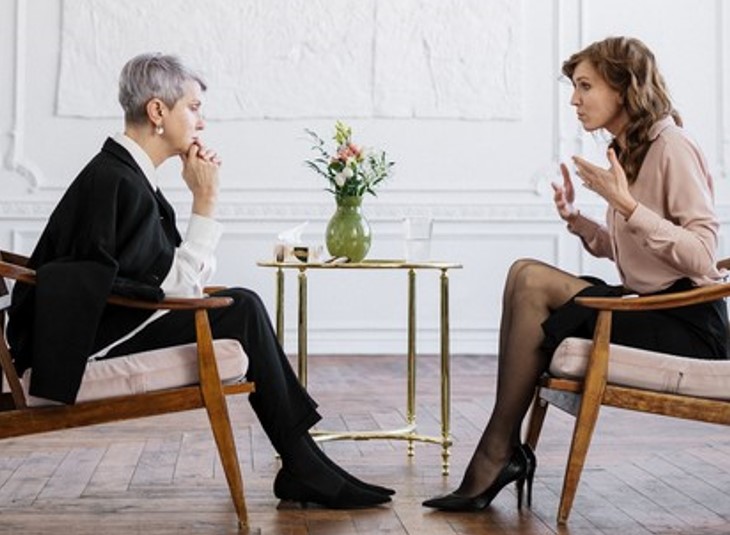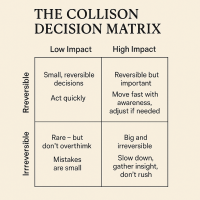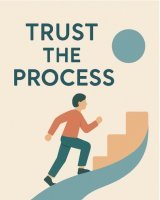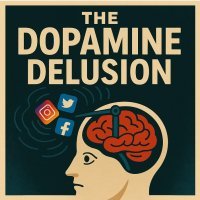The Art Of Persuasion Advanced Communication Skills
Gaining Buyin
Create The Environment Where They Want To Buyin to Your Proposal

The Art Of Persuasion Advanced Communication Skills - Setting The Scene
This is the second article in a series on the art of persuasion based on my business experiences
and applied to situations
in everyday life where you need to
persuade someone to buy into your idea or proposal.
- Sometimes this will be at home with family members and other times will be in your working life or in the context of an organisation that you are involved with.
- The art of persuasion is based on the simple idea that you get what you want by enabling the other party to get what they want - a win-win.
- Being a nice friendly person with good inter-personal skills may be a good start but it is not enough.
There are skills involved in the art of persuasion
In the first article on the art of persuasion, we looked at the basic skills involved in the communication and persuasion process – people's motivations, the use of words and in particular the importance of asking questions.
- In order to build the win-win you have to uncover what it is that the other person really wants or needs, and to do that you have to ask questions.
- But you can't just launch into a conversation or discussion with someone and start asking endless questions and expect answers.
- There are a series of steps you need to go through, which make the other person feel comfortable with you and see the purpose in your questions.
- The aim here is to understand what it is that
the other person wants and how get their buyin to your proposal.
- The aim is also to ensure that you and the other person stay on the same page at each step in the process.
In this article we are focused on advanced communication skills that will help you achieve this.
The Art Of Persuasion The 3 Phases

The 3 phases to ensuring that you and the other person stay on the same page as you build the win-win.
This whole persuasion process starts with you having an idea or a proposal that you are seeking to get someone else to buy into.
Let's use the example of a holiday.
You have found an excellent Airbnb property that is large enough for 2 families and has enclosed land attached suitable for dogs to run around safely and unsupervised.
This property is an attractive rural location and is very close to a village with a good pub and restaurant.
You have family friend lined up to act as "general helper" and to help look after the children.
You would like to pitch this idea to someone you know socially but who is not a close friend. Your contact has 4 children and 2 dogs.
To have the best chance of success with this, you can't just meet up with your contact and launch straight into your pitch.
You need to move in phases. A good general analogy is the phases of social interaction that we are familiar with in networking, building friendships and dating etc.
As you progress through each phase of the discussion you are aiming to ensure that at the end of each phase the other person and you are:
- At ease with each other
- On the same page
The 3 phases are technically known as: Orienting, Analysing and Developing.
[1] ORIENTING - SETTING THE SCENE
During the setting the scene phase, you give the other person a little bit of general information:
"I've been thinking about family holidays this year and looking at various options."
Your aim at this point is to:
- Give just enough information to set the scene and introduce the direction that you want this conversation to take.
- Create a situation with sufficent rapport that the other person will happily and easily exchange information with you.
- Ask open-ended questions to put the other person at ease and to encourage them to speak freely:
"What are your plans?"
"What type of holiday are you considering?"
"Do you have any particular location in mind?"
During the setting the scene phase you absolutely do not:
- Discuss your proposal or idea in any great detail
- Start asking detailed or specific questions
- Introduce the benefits of your holiday proposal ‑ except possibly in a very general sense to keep the flow of conversation moving
[2] ANALYSING - UNCOVERING NEEDS AND REQUIREMENTS
This phase is about uncovering specific information about their holiday needs and requirements that you know your proposal can meet.
This is where you want the other person to educate you as to what key things will constitute the ideal holiday for them.
You also want to try and understand what the other person's drivers and motivations are in the context of their ideal holiday.
You may find that their primary drivers in this context are any one or combination of the typical main drivers shown below:
MOTIVATIONS & DRIVERS
In this phase your goal is to establish what the other person's specific drivers and motivations are with this holiday.
In this example, they are wanting to:
- Save money and are looking for cheaper options to overseas travel and/or staying in hotels or resorts
- Keep up appearances and maintain an image - so the choice of property and geographical location needs to photogenic and somewhere where they will look good
- Have a holiday where most things are taken care of - specifically with their children and pets
- Relax and escape from the hassles and stresses of their busy life
The other person has indicated that they have a very specific idea of what would constitute a really good holiday for them.
When you are uncovering needs and requirements you will need to ask more closed questions [with YES/NO type answers] to get clear and specific facts.
During the uncovering needs and requirements phase you do not:
- Rush to tell them about the benefits of the Airbnb property you have in mind once you understand their needs and requirements
- Get into discussion about the specific features and benefits of your holiday proposal.
It is always a very good idea to test your understanding of the other persons needs and requirements by restating and reconfirming what you have heard to ensure you and the other person have a shared perception of those needs.
[3] DEVELOPING - GAINING BUYIN TO YOUR PROPOSAL
This is the phase where you pull it all together.
Your contact has given you a very clear indication of their needs and requirements for their preferred holiday.
Now is the time to introduce your proposal and to highlight the specific features of your proposal, namely:
- The attractive deal you have got for this Airbnb property
- The fabulous location and the beautiful building
- The great facilities for children and dogs
- A holiday to really relax and unwind
Recap: a feature is a description of your idea or proposal stating what it is and how it works. But always remember that a feature tells the other person about the idea or proposal it does not explain the benefits.
Then you move in to telling them about the benefits this holiday offers.
Recap: a benefit is a brief explanation of what a feature of your propoal can do for the other person - i.e. how it meets their need, how they stand to gain.
So now you outline the benefits of your proposal, and highlight that your proposal was selected and chosen by you because you have very similar needs and requirements to the other person:
- The cost per head and per family for a 10 day airbnb holiday works out at 50% less than staying in a hotel or resorts - so this really does meet the shared financial objective of saving money
- You agree that location is important and you share their standards and values in only staying in "the right type of place" - the village and area where your airbnb is located is a much desired location and the property itself is a very attractive country house - all of which will give fabulous photo opportunites and will look good on Instagram!
- The large enclosed field and the adjoining chldren's play area will be wonderful for the dogs to run around unattended and for the children to play, while you sit out on the terrace relaxing with a glass of wine. Plus you are including a helper to look after the children so that the adults will have lots of free time to relax. In addition there is an award winning pub/restaurant in the adjoining village - excellent to enjoy some fine-dining while the children are looked after by the helper.
- The space and overall facilities of the property together with the beautiful location is ideal for really unwinding and relaxing.
In the world of professional selling there are many different techniques for closing the deal, but in my view this is the very best - and most natural - way to get buyin to your proposal:
Create the environment where they want to buyin to your proposal!
In my experience, in the majority of situations, the best way of getting buyin to your proposal is to create the environment where the other person wants to buyin to your proposal.
This will happen because you have succesfully identifed their needs and you have shown them how the benefits of your proposal meet those needs.
The Art Of Persuasion Collaborative Communication Techniques

This whole persuasion process needs to be participative and collaborative.
It is very important to maintain the interest and involvement of the other person, especially when you are uncovering their needs and requirements.
If it isnt, and it just becomes an interrogation process with you firing a stream of questions, then the other person will feel uncomfortable and will disengage.
These 3 additional communication techniques can help ensure that the other person feels comfortable and engaged in the conversation because you have:
- Demonstrated your understanding of the situation and specifically the other persons needs and requirements
- Shown the other person that you are listening, interested, and working toward understanding how they feel
These techniques are known technically as: Confirming, Acknowledging and Bridging.
[1] CONFIRMING YOUR UNDERSTANDING
When you confirm, you verify that you understand what the other person has said.
This usually involves
restating what you've heard and asking the customer for verification. For example:
“Let's see if I understand this correctly.... Is that right?"
"Are you saying that...?"
“If I understand…is that the case?"
"So you actually depend on.... Is that correct?"
"So, to summarise, correct?"
[2] ACKNOWLEDGING THAT YOU VALUE WHAT THE OTHER PERSON HAS SAID
When the other person
provides information that prompts another question from you, you let them know you
heard and understand the last remark and provide feedback before you talk about
a related or a different subject and ask anothe question. For example
“I see, that's a good point.... Let me ask you then....”
"Interesting. That makes me wonder.....”
"Your comment prompts another thought....”
[3] BRIDGING BY MAKING A CONNECTION BETWEEN ONE OR MORE POINTS THAT YOU HAVE BOTH MADE
For example:
"Earlier you said that.... Does that affect the way you feel about the situation you just described?"
“You mentioned something earlier I'd like to ask about."
Handling Obstacles With Tactical Problem Solving

Tactical Problem Solving is a process of reaching a solution, which:
- Is mutually acceptable to and
- Substantially meets the needs of both parties involved
This is not the same as compromise, where settlement is reached by mutual concessions.
Tactical Problem Solving has three steps:
[1] CONFIRM OBJECTIVES ISSUES TO BE RESOLVED AND THE CONSTRAINTS
Summarise as best you can your understanding of the other persons key needs and requirements and their key issues that need to be resolved.
- Reconfirm your needs and requirements and any issues you have that need to be resolved.
- Also, state any restrictions and constraints within which you both have to operate.
- This should clear the air and focus attention on the shared objectives and the key issues to be resolved.
To continue the Airbnb example:
YOU "....so if I understand you correctly, we broadly both have the same objectives for this holiday but because you are tired, you don't want to be bothered with taking it in turns to cook the evening meals but you obviously would feel gulity about not sharing the load....also, there is a cost constraint about taking both families out to the local pub restaurant for dinner too many times. Is that a fair summary?"
OP "Yes that's it"
[2] INVITE / OFFER ALTERNATIVES
Express your ideas and listen to the other person’s ideas on what steps could be taken to resolve the issues.
- Focus on positive action.
- Explore alternatives together adopting a problem-solving approach to generate solutions that will substantially meet the objectives of both of you.
YOU " So we're both agree we need to work within our cost constraints otherwise we lose the cost benefit of this type of holiday?"
OP "Yes I agree ...I wonder is there somewhere locally where we could order some takeaway meals instead?"
YOU "Or....maybe we could hire someone locally to come in and act as cook for several nights?"
OP "That's a good idea, but couldn't that still work out costly? "
YOU " I know... I think I have may an idea - I could ask our family friend who's going to help with the kids if she would be prepared to act as housekeeper/cook for evening meals? She's a great cook and she loves cooking. In return we offer to pay half of her accomodation costs and all of her share of food costs?"
OP "Brilliant idea!"
[3] BUILD A WIN‑WIN SOLUTION
Once you have both agreed viable alternatives:
- Build the win-win solution
- Be sure that you both clearly understand the commitments contained in the solution and the actions you will take to implement it.
YOU "OK so I will talk to the helper and get that arranged - and I'll let you know as soon as she has confirmed. And we are agreed that both families will split her costs. Also we can't expect her to clear up afterwards so we will need to all muck in and help with that after each dinner. Are you in agreement with all of that?"
OP "Yes that's fine."
YOU "Great so I will go ahead and make the arrangements and email you confirmation of everything."
Persuasion
[1] The Art Of Persuasion The One Fundamental Principle - Create A Win-Win
[2] The Art Of Persuasion Advanced Communication Skills - Gaining BuyIn
[3] The Art Of Persuasion Planning For Success - Here's How To Do It!
Change
Getting From A to B Is Not Aways A Straight Line
Group Culture - The Invisible Software That Rules Your Life
Change Questions To Change Your Outcomes
Communication
How To Influence without Authority - 6 Key Tips
Return from "The Art Of Persuasion Advanced Communication Skills" to:
Communication Persuasion and Change
Or to: Walking The Talk
LATEST ARTICLES
The Battle For Your Mind - How To Win Inner Freedom In A Digital Age Of Distraction
 From External Events to Inner Events. We often think of “events” as things that happen out there: the traffic jam, the rude comment, the delayed email reply. But what truly shapes our experience is wh…
From External Events to Inner Events. We often think of “events” as things that happen out there: the traffic jam, the rude comment, the delayed email reply. But what truly shapes our experience is wh…How to See Your Thoughts Without Becoming the Story
 A Practical Guide to Thought-Awareness. You can spend your life inside the stories of your mind without ever learning how to see your thoughts clearly and objectively. Most of the stuff we tell oursel…
A Practical Guide to Thought-Awareness. You can spend your life inside the stories of your mind without ever learning how to see your thoughts clearly and objectively. Most of the stuff we tell oursel…The Collison Decision Matrix - A Simple Framework for Better Choices
 The Collison Decision Matrix Is A Practical Everyday Thinking Tool. Most of us spend a surprising amount of time worrying about decisions. From small ones such as what to wear, what to eat, what to te…
The Collison Decision Matrix Is A Practical Everyday Thinking Tool. Most of us spend a surprising amount of time worrying about decisions. From small ones such as what to wear, what to eat, what to te…The Power Of Asking The Right Question
 The Power Of Asking The Right Question Lies In The Quest For Insight. To experience the power of asking the right question you must develop the practice of asking questions. The best way to improve th…
The Power Of Asking The Right Question Lies In The Quest For Insight. To experience the power of asking the right question you must develop the practice of asking questions. The best way to improve th…Site Pathways
 Here is a site pathway to help new readers of Zen-Tools navigate the material on this site. Each pathway is based around one of the many key themes covered on this site and contain a 150 word introduc…
Here is a site pathway to help new readers of Zen-Tools navigate the material on this site. Each pathway is based around one of the many key themes covered on this site and contain a 150 word introduc…How To Live With Contradiction - Beyond Thought Let Stillness Speak
 A major impact on so many peoples' lives is the situational contradiction of unfilled realistic expectations. So where does all this leave us? Well here we are, with mental equipment that is more lim…
A major impact on so many peoples' lives is the situational contradiction of unfilled realistic expectations. So where does all this leave us? Well here we are, with mental equipment that is more lim…How To Trust The Process Of Mindfulness - Right Now
 In mindfulness, the process isn’t some distant goal — it's what is happening right now. When we talk about how to trust the process of mindfulness the credibility of the process is heavily dependent…
In mindfulness, the process isn’t some distant goal — it's what is happening right now. When we talk about how to trust the process of mindfulness the credibility of the process is heavily dependent…Inner Mastery For Outer Impact - Mental Clarity For Effective Action
 Insights only matter if they translate into consistent action. In a world crowded with quick fixes and motivational soundbites, the theme “Inner Mastery for Outer Impact” calls us to something more e…
Insights only matter if they translate into consistent action. In a world crowded with quick fixes and motivational soundbites, the theme “Inner Mastery for Outer Impact” calls us to something more e…The Wise Advocate - Helping You Achieve The Very Best Outcome
 The focus of your attention in critical moments of choice either builds or restricts your capacity for achieving the best outcome. When we talk of 'The Wise Advocate' its easy to think of the consigl…
The focus of your attention in critical moments of choice either builds or restricts your capacity for achieving the best outcome. When we talk of 'The Wise Advocate' its easy to think of the consigl…Trust The Process - Beyond The Cliche
 The phrase "trust the process" has become a cliche, the woo-woo mantra of the "self help" industry. Those three little words feel like they ought to mean something useful but hidden behind them are a…
The phrase "trust the process" has become a cliche, the woo-woo mantra of the "self help" industry. Those three little words feel like they ought to mean something useful but hidden behind them are a…The Dopamine Delusion - Why Anticipation Beats Achievement
 The thrill we feel is not in the having, but in the wanting. The more we have, the more we want. The more things we acquire and the easier things get for us, the more discontent we feel. The more spo…
The thrill we feel is not in the having, but in the wanting. The more we have, the more we want. The more things we acquire and the easier things get for us, the more discontent we feel. The more spo…The Power Of Silence Is Experienced In Your Use Of Language
 Practise the "Beneficial Neurological Delay" for optimal comprehension. The power of silence is experienced in your use of language, specifically: - How you formulate the words you use to think and in…
Practise the "Beneficial Neurological Delay" for optimal comprehension. The power of silence is experienced in your use of language, specifically: - How you formulate the words you use to think and in…